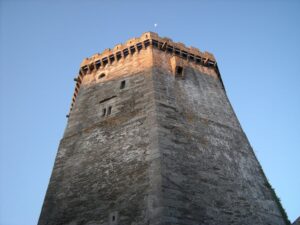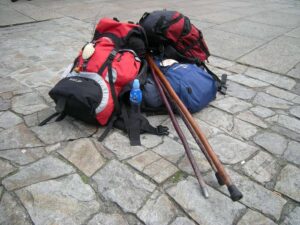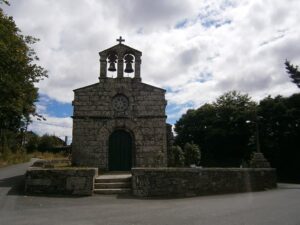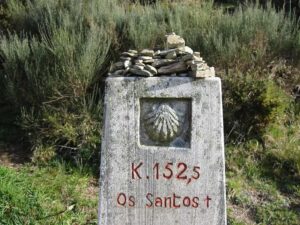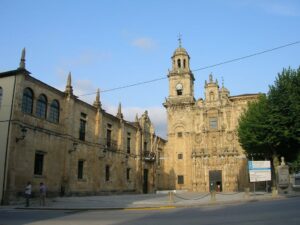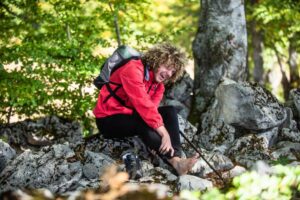The town of Vilalba is one of the main towns in the Terra Chá region, known for its flat terrain. More than that, it is a key point on the Camino del Norte to Santiago de Compostela. With around 15,000 inhabitants, it offers the pilgrim all the necessary services and an interesting historical legacy to discover.
This town was the birthplace of the powerful Andrade family, whose medieval castle — of which its keep survives — dominates the urban landscape and has become a National Parador of Tourism. Below, we present what to see in Vilalba and its surroundings, especially considering the pilgrim travelling the Camino de Santiago along this route.
Índice de contenidos
Points of Interest in Vilalba
Tower of the Andrade Family

The iconic Tower of the Andrade Family is the only remnant of the old medieval castle of Vilalba, and stands out due to its unusual octagonal shape. This structure, standing at over 40 metres tall, was rebuilt several times after the Irmandiña uprisings in the 15th century, which allowed it to survive until today.
This solid keep rises imposingly in the centre of the town and currently houses a Tourism Parador, being the most recognisable historical symbol of the town.
Church of Santa María
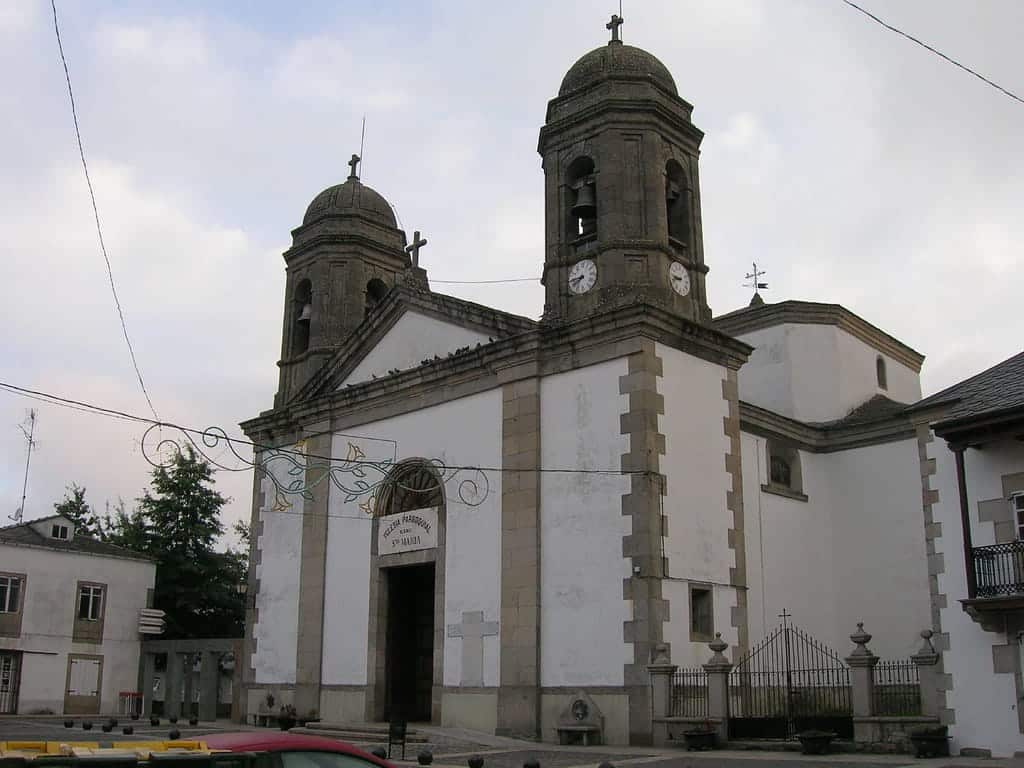
The Church of Santa María is the parish church of the town, located in the main square. It replaced the old Romanesque temple of the town, as it was completely rebuilt in the second half of the 19th century. The current building, in an eclectic historicist style, was designed by the local architect Manuel Mato Vizoso, who knew the old church in his childhood.
The Crosses of Vilalba
Vilalba is also known for its cruceiros, emblematic stone crosses typical of Galicia that combine art, spirituality, and popular tradition. Many are found at crossroads or along old paths, providing the traveller a place to stop, pray, or simply contemplate the surroundings.
Among the most notable ones in the municipality are the Goiriz Cross, the Sancobad Cross, and the San Xoán de Alba Cross. All are in traditional Galician style, with a square base, an ornamented shaft, and a cross with a figure of Christ on one side and the Virgin on the other. Some have been recently restored, and they form part of the cultural landscape that accompanies the pilgrim on their journey through Terra Chá.
Museum of Prehistory and Archaeology
Built in 1192, the Museum of Prehistory and Archaeology of Vilalba (MUPAV) is a must-visit for those interested in the local history. This municipal museum is dedicated to the research, preservation, and dissemination of Galicia’s prehistory and ancient history.
It features a permanent exhibition that covers the ancient cultures of the northwest Iberian Peninsula, complemented by temporary exhibitions, conferences, and courses throughout the year.
Recreational Area of Madalena and River Walk
The Recreational Area of Madalena is a large green space on the banks of the river of the same name, covering around 3 hectares with parks and outdoor sports facilities.
In this natural setting, a literary and river walk begins, which stretches for about 3 km upstream to the Ponte dos Freires, combining the riverside beauty with the art of the Paseo dos Soños: every 100 metres, the walker encounters sculptures and texts dedicated to local writers, integrated within the nature.
The trail is well-maintained, with wooden bridges to cross the river at several points, small traditional mills, a wooded island, and even a river beach with a picnic area and a café where it’s worth taking a break.
Charca do Alligal
The Charca do Alligal is a natural pool of mineral-medicinal thermal waters located about 10 km from the town (specifically, in the parish of Codesido). Surrounded by a small forest of birch trees, this lagoon, approximately 30 metres in diameter, is fed by underground springs whose bubbles continually rise to the surface.
Since the 1930s, this place has been adapted as a rustic spa, highly appreciated by locals and visitors for relaxation due to the healing properties of its waters. In the summer, the pond offers changing rooms, toilets, and even a small bar, due to its popularity as one of the main tourist attractions in the area.
Other points of interest
In addition to the aforementioned sites, Vilalba is home to several historic bridges across its rivers, including the Martiñán Bridge (17th century, over the Batán River) and the Saá Bridge (medieval origin, restored with modern elements).
The Casa de la Cultura (House of Culture), a sober building from 1842 that was originally the town hall and county prison, is also worth a visit; today it is used as an exhibition space for temporary art and photography exhibitions.
Nearby points of interest
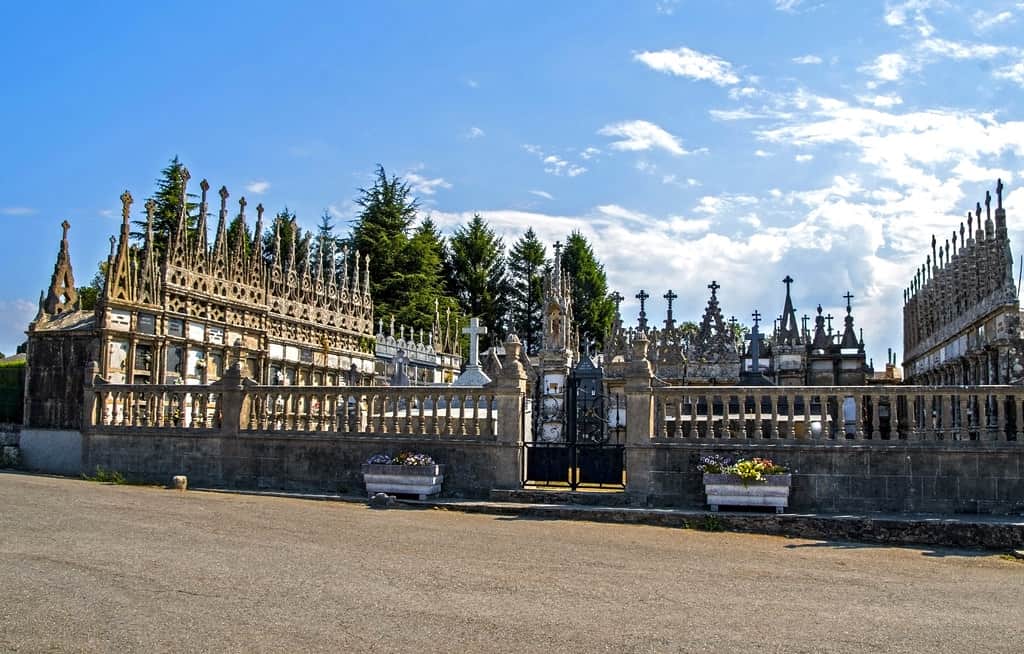
The surroundings of the Terra Chá region hide lesser-known but highly valuable heritage and symbolic sites, particularly for those walking the Camino. Among them, the neo-Gothic rural cemeteries, scattered across several nearby parishes, stand out.
These are part of a fascinating artistic and cultural phenomenon that flourished between the late 19th and early 20th centuries. Towns such as Román, Oleiros, San Simón da Costa, and Goiriz preserve these small cemeteries with chapels, crosses, and tombs inspired by Gothic architecture. They are adorned with pinnacles, pointed arches, and sculptures that reflect a love for monumental designs in humble spaces.
Vilalba’s Gastronomy
Vilalba’s cuisine is rich and traditional, a true reflection of the agricultural Terra Chá region. The San Simón da Costa cheese, a Galician smoked cow’s milk cheese, is particularly notable. It has its own Denomination of Origin, and its distinctive conical shape is unmistakable.
Another star product is the Vilalba capon, a free-range rooster traditionally raised and fattened for Christmas, known for its tasty meat. Every December, the town hosts the traditional Feria del Capón (Capon Fair), attracting buyers from all over Spain to taste tapas and dishes where this bird is the main ingredient.
Additionally, local tables are never without typical Galician turnip greens, garden potatoes, and other native products, which feature prominently in many local homemade dishes.
Festivals and Traditions
Vilalba’s festive calendar offers several celebrations of interest to pilgrims and visitors. These include the patron saint festivals of San Ramón (31st August) and Santa María (1st September), as well as other deep-rooted celebrations such as the Fiesta de los Pepes (19th March, St. Joseph’s Day) and the Fiesta de San Pedro (29th June).
In spring, the FIV (Vilalba Independent Festival) takes place, a music event held at the end of March. The first Sunday of April sees the San Simón da Costa Cheese Fair, an ideal opportunity to taste this iconic cheese alongside honeys, pies, and other local products.
The Camino del Norte and Other Routes: Which One to Choose?
The Camino del Norte stretches along the Cantabrian coast from Irún (Basque Country) to Santiago de Compostela, passing through iconic cities such as San Sebastián, Bilbao, Santander, and Gijón.
It is a scenic pilgrim route, offering views of beaches and cliffs on one side, and green mountains on the other. It is considered one of the most beautiful routes due to the variety of natural landscapes it offers the pilgrim.
Unlike the crowded French Way, it attracts fewer pilgrims, allowing for a more peaceful experience. However, it has a good network of services as it passes through tourist areas, though it is physically more demanding than other more popular routes.
Many travellers with less than two weeks opt to walk only a section of this route. For example, the section from Santander to Gijón covers some of the most attractive coastal landscapes of Cantabria and Asturias. It offers the essence of the Camino del Norte in a shorter experience.
What Makes It Different from Other Routes
Compared to the Camino Primitivo, which is also known for its difficulty and authenticity, the Northern Way is longer with coastal stages. The Primitivo passes through mountainous areas of inland Asturias and Galicia, with fewer intermediate towns but a history deeply tied to the origin of the pilgrimages.
The Camino Inglés, on the other hand, is much shorter and more accessible. It is ideal for those with less time, as one can obtain the Compostela in just five or six stages, but it does not offer the same scenic variety or vast distances as the Camino del Norte.
Alternatively, the Camino Portugués offers a more temperate option, with good weather, gentle stages, and a wide range of accommodation. Many pilgrims choose the Portuguese Way from Oporto to A Guarda, perfect for those seeking the sea, culture, and gastronomy without much physical effort.
From there, it is possible to continue on the route from A Guarda to Santiago, a path that combines the Galician coastline, charming villages, and comfortable stages.
As with any Jacobean route, the Camino del Norte can be done independently or by booking an organised Camino through specialised agencies such as Mundiplus. The latter option helps with logistics, accommodation, luggage transport, and other services, allowing pilgrims to focus solely on enjoying the journey.


